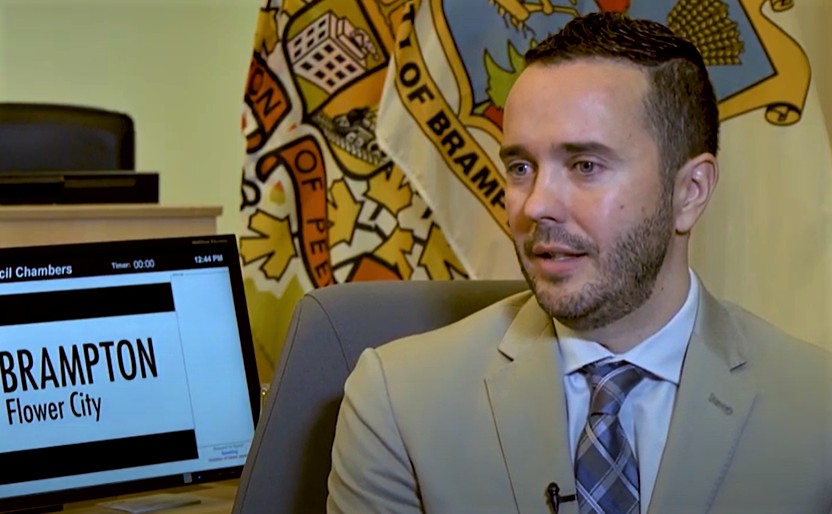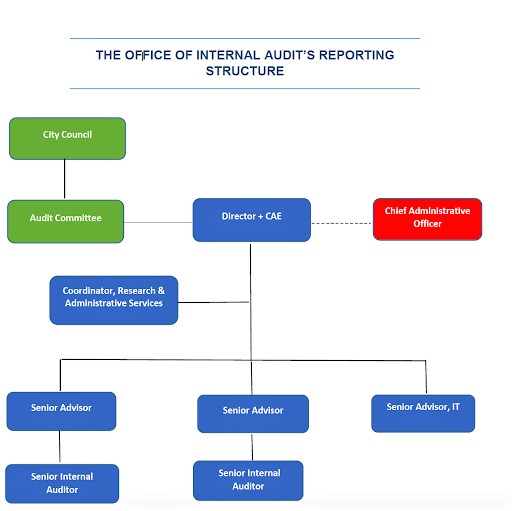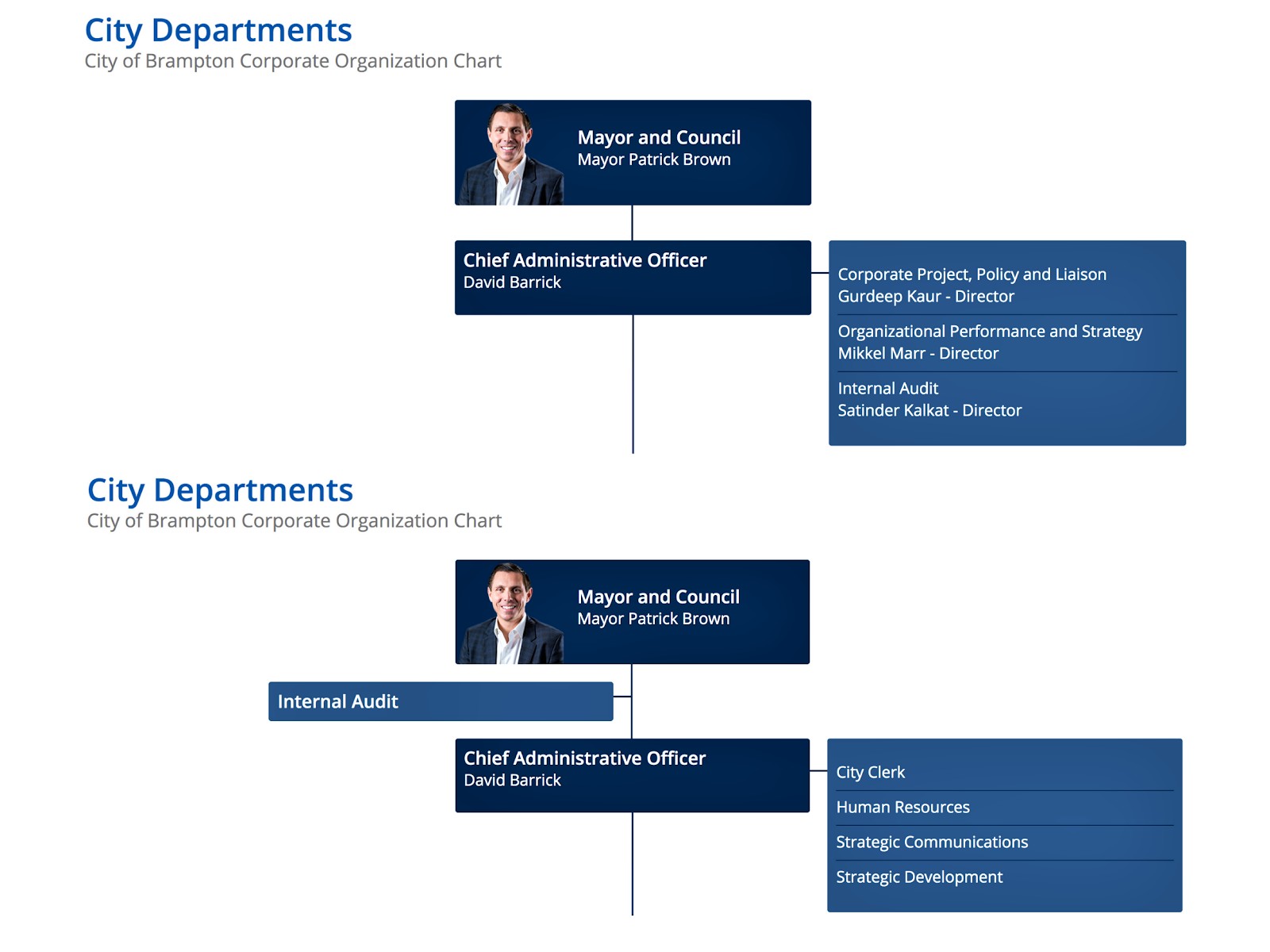
Brampton CAO continues erosion of accountability and transparency–moves independent audit function under his authority
The City of Brampton’s independent internal audit mandate stresses the philosophy of improving operations within the City, emphasizing the highest level of due diligence and autonomy is applied when looking into the way public funds are used, free from any outside influence.
However, shortly after CAO David Barrick arrived at City Hall following his firing from a Niagara conservation agency for mismanagement and a scathing Ontario ombudsman investigation report that implicated him in a fraudulent hiring process, the City’s top bureaucrat fired the head of internal audit, then moved the role from its independent reporting line to council and placed it under his authority.
At least one councillor has expressed concern over Barrick’s takeover of another accountability mechanism.

In September, Councillor Jeff Bowman raised concern over moving the internal audit department out from under Council's oversight.
The mandate of internal audit was also quietly changed, removing its independence, the hallmark feature of any municipal audit department function. The structure no longer follows the recommended independent structure outlined by the association that represents municipal auditors.
In September, following Barrick’s hiring in late 2019 and the immediate termination of former director of internal audit, Foruzan Velji, council approved a new audit charter that was quietly amended by staff to reflect the stark departure from the independence under the previous charter, approved in 2017.

The reporting structure in 2017, taken from a City report at that time.
There are now concerns that Barrick is blocking audit and investigation work that would reveal disturbing behaviour directed by the CAO.
Mayor Patrick Brown oversaw the process to hire Barrick, who has close ties to Brown through Conservative political circles. Despite all the evidence and years of reporting, Brown has denied that Barrick was implicated in the Niagara hiring scandal, even though the provincial ombudsman investigation, titled “Inside Job”, details his disturbing conduct.
Sunny Kalkat had been hired by Barrick to take over the internal audit department after Velji departed days after the new CAO’s arrival.
But two weeks ago, the public learned that Kalkat was suddenly no longer the head of internal audit, raising many questions about who is providing crucial oversight and whether the CAO is once again stripping away transparency and accountability inside City Hall.
Last month, councillors expressed their frustration during a public meeting after Barrick had illegally removed the independent freedom of information function from the City clerk’s office (the accountability role reported directly to council) and quietly moved it under his authority, which was a violation of the bylaw outlining the function and the provincial legislation which states the municipal freedom of information role has to report either to council or someone appointed by council. Barrick was never given that role. Council voted to put the function back under the clerk’s office, reporting directly to elected members, not the CAO.
While councillors expressed their frustration and concern during the public meeting over Barrick’s behaviour, Brown remained quiet.
Now, questions are mounting about how Barrick has handled City Hall’s primary oversight mechanism, through the internal audit department. The CAO had the Charter that governs the audit function altered shortly after his arrival. The document now details a new reporting structure, stating audit reports will be shared with divisional heads or commissioners of a department, along with the CAO, before being presented to the council-led audit committee. “The CAO will be advised prior to Internal Audit sharing internal audit reports and/or related information with the Audit Committee.”
These new guidelines created by staff, not council, run contrary to accepted best practices for municipal internal audit departments, which are supposed to be completely independent from the bureaucratic staff auditors are required to hold accountable.
The Institute of Internal Auditors, which Ontario’s municipal auditors use for guidance, states, “The internal audit charter is a formal document that defines the internal audit activity's purpose, authority, and responsibility. The internal audit charter establishes the internal audit activity's position within the organization, including the nature of the chief audit executive’s functional reporting relationship with the board (council); authorizes access to records, personnel, and physical properties relevant to the performance of engagements; and defines the scope of internal audit activities. Final approval of the internal audit charter resides with the board (council).”
Independence is the key to the function.
“The chief audit executive must report to a level within the organization that allows the internal audit activity to fulfill its responsibilities,” the institute states. “The chief audit executive must confirm to the board (council), at least annually, the organizational independence of the internal audit activity.”
Functional and administrative practices under the 2020 Internal Audit Charter are now under Barrick’s authority, after he moved all reporting lines out from under council and the audit committee.
Before Barrick had the Charter altered, the prior version stated: “The Chief Audit Executive will report functionally to the Audit Committee and administratively to the CAO.”
The organizational chart was changed and shows how internal audit is now under the CAO, whereas the previous chart had it under the council audit committee.

The internal audit reporting structure now (top) after CAO David Barrick changed it, and the structure before he quietly made the changes (bottom).
The current Charter no longer follows the guidelines set out by the Institute of Internal Auditors (IIA) which was previously used by the City of Brampton to establish its internal audit standards.
In a report presenting the 2020 Charter, the importance of the IIA is acknowledged, and the guidelines the 2017 Charter was modeled after are included, but the final version of the current Charter does not include the suggested reporting structure.
“Ideally [the charter] establishes reporting lines for the chief audit executive (CAE) that support that independence by reporting functionally to the governing body (or those charged with governance) and administratively to executive management,” the City audit report states, using guidelines from the IIA.
This was an issue Councillor Jeff Bowman raised at the September 8 audit committee meeting when the item was first discussed. He said the auditor’s reports should come to council alone. “I have a major problem with that. That is not transparent… there's no way that should be happening.”
Citizen member Iqbal Ali echoed Bowman’s concerns, questioning how the new reporting structure would guarantee the auditor could report to council without any fear of reprimand if a report casts staff in a negative light.
Barrick said the new charter responds to what council asked staff to do: ensure it reflects the bylaws and legislation of the City. He did not explain what specific bylaws or legislation the charter lines up with. And he did not explain why he changed the Charter to remove the functional oversight of internal audit from council to himself, an obvious contradiction of the stated need for independence.
All the investigation work internal audit does, to ensure staff are not abusing public trust, finances or their responsibilities, involves staff who report to Barrick. He oversees them and now also oversees the accountability mechanism meant to hold himself and other bureaucrats in check.
Reporting directly to council would be a function of an auditor general, which the previous term of council decided against, he told audit committee. “With the director of internal audit function, they have to report somewhere and in this case, it's the CAO.” This is a direct contradiction of the guidelines for internal audit, and the Charter in place before Barrick’s arrival.
Since stepping foot inside City Hall he has stripped away council’s mandated oversight role, on behalf of the public, in an alarming violation of bylaws and provincial legislation.
When audits are presented to council, questions about any problems uncovered have to be answered by the staff responsible for any problems.
Barrick said it’s difficult to answer these questions when the “operational awareness” is absent and staff don’t know what the issue at hand is. It’s unclear what he meant, as staff are always fully aware of their own behaviour and practices.
Barrick claimed the director of internal audit reported to the CAO before he took the City’s top job in October 2019. “This is not new.”
His claims are inaccurate.

Brampton CAO David Barrick wrongly claimed the head of internal audit was under the CAO's office before his arrival at City Hall at the end of 2019.
Barrick’s claims do not match up with the previous charter or the City’s organizational chart outlining the departmental structure. Currently, the internal audit department is listed under Barrick, where he claims it always has been. The City’s organizational chart from June 2020, and for the months prior, show the department stood on its own, with a reporting line to the council internal audit committee.
When The Pointer asked the City about the changed structure, a spokesperson said the question was “not factual.” When images of the website were provided as evidence of the change to the audit reporting structure, the City did not respond. The Pointer tried numerous times to get clarification but no response was provided ahead of publication.
The new Charter was created under Sunny Kalkat, the former director of internal audit. According to sources who spoke with The Pointer, Kalkat was let go from her position days before her contract was set to expire, recently. At this time, Richard Gervais, senior advisor for IT audit, is filling the position on an interim basis. A City spokesperson told The Pointer they can’t speak to the employment status of any City employees.
Under the 2020 charter, the CAO is listed as being responsible for the “appointment, dismissal and remuneration of the Director of Internal Audit,” a task that typically is supposed to be overseen by council.
Under the Charter approved in 2017, Council was given authority to "Approve decisions regarding the appointment and removal of the Chief Audit Executive"; and approval of "decisions relating to the remuneration of the Chief Audit Executive."
It stated that, under the IIA guidelines: "The Chief Audit Executive will have unrestricted access to, and communicate and interact directly with, the audit committee, including private meetings without management present."
Barrick has removed this independence, effectively cancelling the audit department's key accountability and oversight function.
The IIA states council must ensure: "The internal audit activity must be free from interference in determining the scope of internal auditing, performing work, and communicating results. The chief audit executive must disclose such interference to the board (council) and discuss the implications."
According to an internal email obtained by The Pointer, Barrick advised Council of the decision to release Kalkat on February 19. “In consultation with the chair and vice chair of audit committee, it is the most responsible course of action to fill such a position once City Council has deliberated and made a decision on the forthcoming report,” the email read.
It goes on to say Kalkat’s contract with the City was fulfilled and it wasn’t extended because of council’s decision to explore “options for an auditor general model.”
It’s unclear why Barrick thought the council request to explore another layer of oversight was grounds to not rehire the existing head of internal audit. Sources told The Pointer Kalkat did not serve the full duration of her contract.
The idea of an auditor general function was initially introduced at the January 27 City Council meeting. Following allegations of widespread fraud under his watch, Brown asked staff to look at the possibility of creating a municipal ombudsman office. A municipal ombudsman would allow complaints to be filed against any staff members for a possible investigation. Councillors pointed out that an auditor general does not need complaints to investigate staff, and focuses their investigation on issues they deem important.
Kalkat is the second internal auditor to vacate her position since Barrick was hired. Former director Foruzan Velji was let go in October 2019, a week after Barrick started, according to sources.
Kalkat’s position was left vacant mere days before the Tuesday audit committee meeting last week, the first of four meetings that happen throughout the year. Her name was listed as the lead in three of the four reports that were part of the committee agenda.
In the obtained internal email, Barrick states filling the position on an interim basis “is the most responsible course of action” until council decides on the position it wants to take.
Kalkat’s vacancy comes as the corporate fraud prevention hotline has seen a dramatic rise in complaints. This function allows employees to anonymously make complaints regarding fraudulent activities in City Hall.
Since the committee’s last meeting on November 24, the hotline received 29 complaints, the most reported since Kalkat was hired a year ago, making up a third of the 77 total complaints since the service was launched in 2016.
Barrick acknowledged there are gaps in the types of complaints that are allowed to be investigated and said the corporate policy team is looking into the issue and examining how to best direct complaints.
Some of the complaint reports have been “closed” but details were not provided during the discussion as to what each investigation uncovered or who was investigated.
The Pointer will be following up on the reports that were closed without providing details during the public meeting.
Email: [email protected]
Twitter: @nida_zafar
Tel: 416 890-7643
COVID-19 is impacting all Canadians. At a time when vital public information is needed by everyone, The Pointer has taken down our paywall on all stories relating to the pandemic and those of public interest to ensure every resident of Brampton and Mississauga has access to the facts. For those who are able, we encourage you to consider a subscription. This will help us report on important public interest issues the community needs to know about now more than ever. You can register for a 30-day free trial HERE. Thereafter, The Pointer will charge $10 a month and you can cancel any time right on the website. Thank you.
Submit a correction about this story


